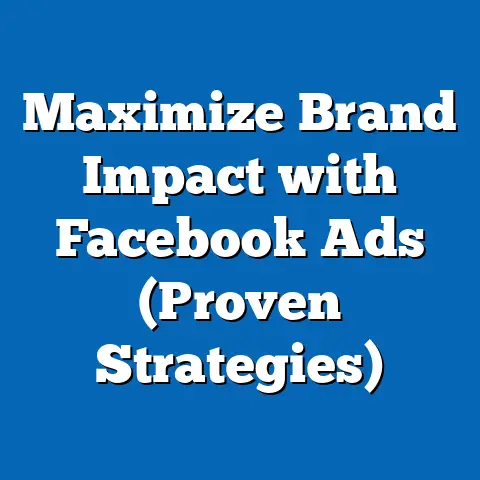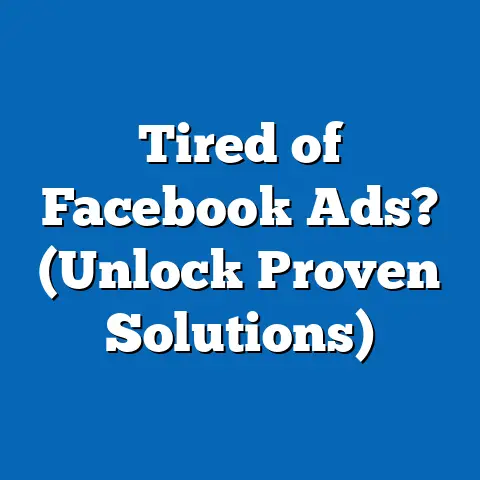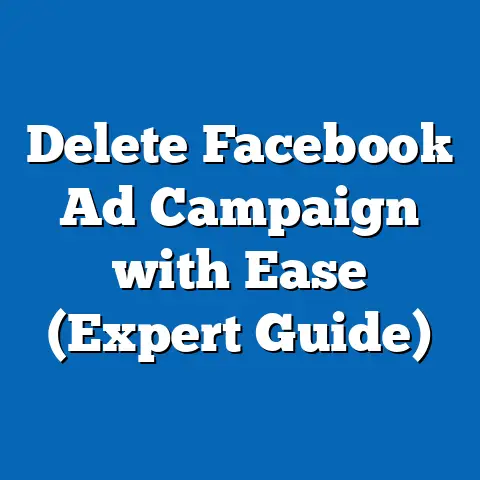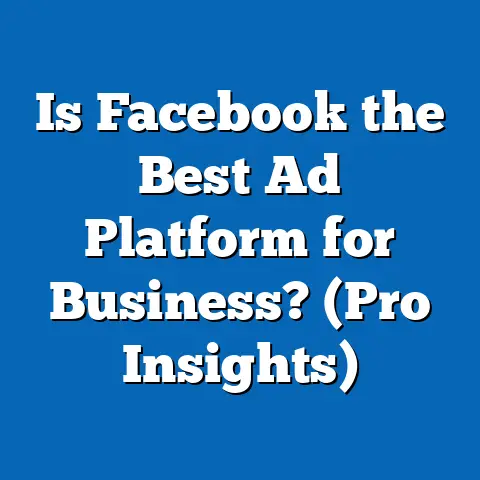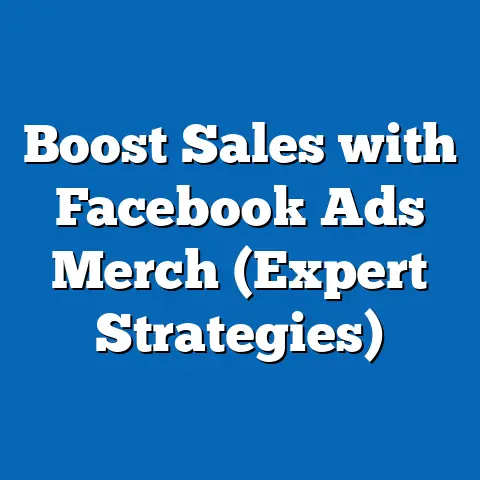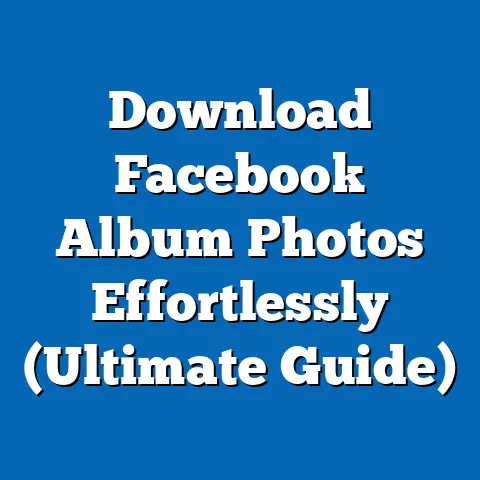Why Facebook Ad Isn’t Running (Critical Insights)
Let’s face it, launching a Facebook ad campaign can feel like a walk in the park. I mean, the platform is designed to be user-friendly, right? You create your ad, choose your audience, set your budget, and bam! You expect leads and sales to start rolling in. That’s what I thought when I first started dabbling in Facebook ads years ago. I envisioned a smooth, automated process where my perfectly crafted ads would effortlessly reach my ideal customers.
But, oh boy, was I in for a surprise! I quickly learned that the path to successful Facebook advertising isn’t always paved with roses. In fact, it’s often riddled with unexpected potholes and detours. One of the most frustrating experiences I had early on was setting up a campaign, eagerly awaiting results, only to find that my ads weren’t running at all! It was like throwing money into a black hole, with no visibility into what went wrong.
Trust me, I get the frustration. That’s why I’m writing this guide – to shed light on the common reasons why your Facebook ads might not be running and equip you with the knowledge to troubleshoot and get your campaigns back on track. We’ll dive deep into the intricacies of the platform, explore real-world scenarios, and uncover actionable strategies to ensure your ads are seen by the right people at the right time. Let’s get started!
Understanding Facebook Ads
Facebook Ads are a powerful tool for businesses of all sizes to reach a massive audience with targeted marketing messages. Think of them as the modern-day equivalent of billboards, but with laser-like precision. Instead of hoping your message resonates with passersby, Facebook Ads allow you to pinpoint your ideal customer based on demographics, interests, behaviors, and even their past interactions with your business.
The Role of Facebook Ads in Online Marketing
In today’s digital landscape, organic reach is becoming increasingly challenging. Facebook Ads provide a way to cut through the noise and get your message directly in front of your target audience. They’re crucial for:
- Brand Awareness: Introducing your brand to new audiences and building recognition.
- Lead Generation: Capturing contact information from potential customers who are interested in your products or services.
- Website Traffic: Driving qualified traffic to your website to increase engagement and conversions.
- Sales: Promoting your products or services and driving direct sales through online or offline channels.
Types of Facebook Ads
Facebook offers a variety of ad formats to suit different marketing goals and creative styles. Here are some of the most common types:
- Image Ads: Simple and effective, using a single image to capture attention and convey your message. These are great for showcasing products or highlighting key benefits.
- Video Ads: Engaging and dynamic, using video to tell your brand story and connect with your audience on a deeper level. Video ads are particularly effective for demonstrating product features or showcasing customer testimonials.
- Carousel Ads: Showcasing multiple images or videos in a scrollable format, allowing you to highlight different aspects of your product or service. Carousel ads are ideal for showcasing product collections or telling a story in a visually compelling way.
- Slideshow Ads: Creating a video-like experience using a series of still images, offering a cost-effective alternative to video ads. Slideshow ads are a great way to create engaging content with limited resources.
- Collection Ads: Designed for e-commerce businesses, allowing users to browse and purchase products directly from the ad. Collection ads typically feature a hero image or video, followed by a selection of related products.
- Instant Experience Ads: Formerly known as Canvas Ads, these ads provide a full-screen, immersive experience that loads instantly on mobile devices. Instant Experience ads are great for telling a brand story or showcasing a product in detail.
The Effectiveness of Facebook Ads: Statistics That Speak Volumes
Facebook Ads aren’t just a trend; they’re a proven strategy for driving results. Here are some statistics that highlight their effectiveness:
- Reach: Facebook boasts over 2.9 billion monthly active users, providing unparalleled reach for advertisers.
- Targeting: Facebook’s advanced targeting options allow you to reach specific demographics, interests, and behaviors, ensuring your ads are seen by the most relevant audience.
- ROI: Studies have shown that Facebook Ads can deliver a significant return on investment, with some businesses reporting a 5x or even 10x return on their ad spend.
- Engagement: Facebook Ads are highly engaging, with users often liking, commenting, and sharing ads that resonate with them. This organic engagement can further amplify your message and reach.
I remember working with a small local bakery that was struggling to attract new customers. We launched a Facebook ad campaign targeting people within a 5-mile radius who were interested in baking, desserts, and local businesses. The results were astounding! Within a few weeks, the bakery saw a significant increase in foot traffic and online orders. The campaign not only drove sales but also helped the bakery build a loyal customer base.
Key Takeaway: Facebook Ads are a powerful tool for reaching a massive audience with targeted marketing messages. Understanding the different ad types and their intended purposes is crucial for creating effective campaigns that drive results.
Common Reasons Ads Don’t Run
Okay, so you’ve created your ad, set your budget, and targeted your audience. But for some reason, your ads aren’t running. What gives? Here are some of the most common culprits:
Ad Approval Process
Facebook has a strict ad approval process to ensure that all ads comply with its advertising policies. This process typically takes a few minutes to a few hours, but in some cases, it can take longer. If your ad violates Facebook’s policies, it will be disapproved, and it won’t run.
Common Reasons for Disapproval
- Violations of Community Standards: Ads that promote violence, hate speech, or discrimination are strictly prohibited.
- Inappropriate Content: Ads that are sexually suggestive, exploit, abuse, or endanger children are not allowed.
- Misleading Claims: Ads that make false or misleading claims about products or services are prohibited.
- Copyright Infringement: Ads that use copyrighted material without permission are not allowed.
- Prohibited Products and Services: Ads that promote illegal or regulated products and services, such as firearms, tobacco, or gambling, are restricted.
I once had an ad disapproved because it used the word “guarantee” in the headline. Facebook considered this to be a misleading claim, as they felt it implied a certainty that couldn’t be guaranteed. I quickly revised the headline to use more cautious language, and the ad was approved.
Key Takeaway: Before launching your ad, carefully review Facebook’s advertising policies to ensure that your ad complies with all requirements. Pay close attention to the language, imagery, and targeting of your ad to avoid disapproval.
Budget and Bidding Issues
Your budget and bidding strategy play a crucial role in determining whether your ads run and how effectively they reach your target audience.
Impact of Budget Settings
- Daily vs. Lifetime Budgets: Daily budgets allow you to spend a fixed amount each day, while lifetime budgets allow you to spend a total amount over the entire duration of your campaign.
- Insufficient Budgets: If your budget is too low, your ads may not run or may only be shown to a limited audience. Facebook’s algorithm prioritizes ads with higher budgets, as they are more likely to generate revenue for the platform.
Bidding Strategies
- Automatic Bidding: Facebook automatically sets your bids to maximize your results within your budget. This is a good option for beginners, as it simplifies the bidding process.
- Manual Bidding: You set your bids manually, giving you more control over how much you spend for each click or impression. This option requires more expertise, but it can be more effective for advanced advertisers.
I learned the hard way that setting a ridiculously low budget doesn’t guarantee success. I once tried to run a campaign with a daily budget of just $1, hoping to generate leads on a shoestring budget. Unsurprisingly, my ads barely ran, and I didn’t get a single lead. I quickly realized that I needed to invest more in my campaign to see meaningful results.
Key Takeaway: Set a realistic budget that aligns with your marketing goals and target audience. Experiment with different bidding strategies to find the one that delivers the best results for your business.
Target Audience Limitations
Targeting the right audience is essential for the success of your Facebook ad campaigns. However, overly narrow targeting can limit your ad reach and prevent your ads from being shown.
Key Takeaway: Find the sweet spot between targeting a relevant audience and ensuring that your audience is large enough to allow your ads to run effectively. Experiment with different targeting options to find the combination that delivers the best results for your business.
Ad Scheduling Conflicts
Ad scheduling allows you to specify the times and days that your ads run. This can be useful for targeting specific time zones or aligning your ads with user activity patterns. However, incorrect ad scheduling can lead to ads not running when you expect them to.
Peak User Times
- Understanding User Activity: Facebook’s user activity varies throughout the day and week. Understanding when your target audience is most active can help you optimize your ad scheduling.
- Scheduling Ads for Peak Times: Scheduling your ads to run during peak user times can increase your ad visibility and engagement.
Time Zone Considerations
- Targeting Different Time Zones: If you’re targeting users in different time zones, make sure to adjust your ad scheduling accordingly.
- Ensuring Ad Coverage: Ensure that your ads are running during the hours that your target audience is most likely to be active in their respective time zones.
I once launched a campaign targeting small business owners in the United States. I scheduled my ads to run during typical business hours, assuming that’s when my target audience would be most active. However, I quickly realized that many small business owners were working late into the night, so I adjusted my ad scheduling to include evening hours. This resulted in a significant increase in ad engagement and lead generation.
Key Takeaway: Analyze your target audience’s activity patterns and schedule your ads to run during peak user times. Consider time zone differences when targeting users in different locations.
Account and Payment Issues
Issues with your advertiser account or payment method can prevent your ads from running.
Payment Failures
- Expired Credit Card: Make sure your credit card is up-to-date and hasn’t expired.
- Insufficient Funds: Ensure that you have sufficient funds in your account to cover your ad spend.
- Payment Thresholds: Be aware of Facebook’s payment thresholds and make sure your account is in good standing.
Account Restrictions
- Policy Violations: Repeated violations of Facebook’s advertising policies can result in account restrictions, preventing you from running ads.
- Suspicious Activity: Facebook may restrict your account if it detects suspicious activity, such as unusual ad spend or targeting patterns.
I once had my ad account temporarily restricted because Facebook detected suspicious activity. It turned out that I had accidentally set my daily budget to an extremely high amount, which triggered a security alert. I quickly contacted Facebook support, explained the situation, and had my account reinstated.
Key Takeaway: Keep your account information up-to-date and monitor your account activity regularly. If you encounter any issues, contact Facebook support for assistance.
Technical Glitches and Errors
Sometimes, technical glitches or errors in the Facebook Ads Manager can prevent your ads from running.
Browser Compatibility
- Using Supported Browsers: Make sure you’re using a supported browser, such as Chrome, Firefox, or Safari.
- Clearing Cache and Cookies: Clearing your browser’s cache and cookies can often resolve technical issues.
App Updates
- Keeping the Facebook App Updated: Ensure that you have the latest version of the Facebook app installed on your mobile device.
- Checking for Bugs: Be aware of any known bugs or issues with the Facebook app and report them to Facebook support.
I once spent hours troubleshooting a campaign that wouldn’t launch, only to discover that the issue was with my browser. I switched to a different browser, and the campaign launched without any problems.
Key Takeaway: Keep your browser and Facebook app updated and clear your cache and cookies regularly. If you encounter persistent technical issues, contact Facebook support for assistance.
Real-World Case Studies
Let’s dive into some real-world examples of businesses that faced challenges with their Facebook ads not running and how they overcame them.
Case Study 1: The E-commerce Startup
Challenge: A newly launched e-commerce startup was struggling to get their Facebook ads to run. They had created visually appealing ads showcasing their products, but the ads were consistently disapproved.
Solution: After reviewing Facebook’s advertising policies, the startup realized that their ads were making unsubstantiated claims about the effectiveness of their products. They revised their ad copy to remove these claims and focus on the unique features and benefits of their products. They also ensured that their website provided clear and accurate information about their products.
Outcome: The revised ads were approved, and the startup was able to launch their Facebook ad campaign. They saw a significant increase in website traffic and sales, demonstrating the importance of complying with Facebook’s advertising policies.
Case Study 2: The Local Restaurant
Challenge: A local restaurant was running Facebook ads to promote their lunch specials. However, their ads were only running sporadically, and they weren’t seeing the desired results.
Solution: After analyzing their ad scheduling, the restaurant realized that their ads were only running during off-peak hours when their target audience was less likely to be active on Facebook. They adjusted their ad scheduling to run during peak lunch hours, targeting users who were likely to be looking for a place to eat.
Outcome: The adjusted ad scheduling resulted in a significant increase in ad visibility and engagement. The restaurant saw a surge in foot traffic during lunch hours, demonstrating the importance of aligning ad scheduling with user activity patterns.
Case Study 3: The SaaS Company
Challenge: A SaaS company was running Facebook ads to generate leads for their software platform. However, their ads weren’t running consistently, and they were experiencing high lead costs.
Solution: After reviewing their targeting options, the SaaS company realized that their audience was too broad, resulting in their ads being shown to irrelevant users. They refined their targeting to focus on specific industries and job titles that were most likely to be interested in their software platform.
Outcome: The refined targeting resulted in a significant decrease in lead costs and an increase in lead quality. The SaaS company was able to generate more qualified leads at a lower cost, demonstrating the importance of targeting the right audience.
Key Takeaway: These case studies highlight the importance of understanding the various factors that can affect ad delivery. By carefully analyzing your campaigns and addressing any potential issues, you can ensure that your ads are running effectively and delivering the desired results.
The Impact of Algorithm Changes
Facebook’s algorithm is constantly evolving, and these changes can have a significant impact on ad delivery and performance. Staying informed about these changes is crucial for maintaining successful Facebook ad campaigns.
Understanding the Algorithm
Facebook’s algorithm determines which ads are shown to which users based on a variety of factors, including:
- Relevance: How relevant the ad is to the user’s interests and behaviors.
- Engagement: How likely the user is to engage with the ad, such as liking, commenting, or sharing.
- Bid: How much the advertiser is willing to pay for each click or impression.
- Quality: The quality of the ad creative and landing page experience.
Staying Informed
- Following Industry Blogs: Stay up-to-date on the latest Facebook ad news and algorithm changes by following industry blogs and publications.
- Attending Webinars and Conferences: Attend webinars and conferences to learn from industry experts and network with other advertisers.
- Monitoring Facebook’s Announcements: Keep an eye on Facebook’s official announcements and updates regarding advertising policies and algorithm changes.
Adapting to Changes
- Testing Different Ad Formats: Experiment with different ad formats to see which ones perform best under the current algorithm.
- Refining Targeting Options: Continuously refine your targeting options to ensure that your ads are being shown to the most relevant audience.
- Optimizing Ad Creative: Optimize your ad creative to increase engagement and improve the user experience.
- Adjusting Bidding Strategies: Adjust your bidding strategies to stay competitive and maximize your results.
I remember when Facebook rolled out a major algorithm update that prioritized meaningful interactions between friends and family. This update had a significant impact on organic reach for businesses, making it even more challenging to get their content seen. As a result, many businesses had to increase their ad spend to maintain their reach and engagement.
Key Takeaway: Facebook’s algorithm is constantly evolving, and staying informed about these changes is crucial for maintaining successful Facebook ad campaigns. Adapt your strategies and tactics to stay ahead of the curve and maximize your results.
Conclusion
So, why aren’t your Facebook ads running? As we’ve explored, there are many potential reasons, ranging from ad approval issues and budget constraints to targeting limitations and technical glitches. The key is to approach the situation systematically and troubleshoot each potential cause until you identify the root of the problem.
Key Insights
- Compliance is King: Always adhere to Facebook’s advertising policies to avoid ad disapproval.
- Budget Wisely: Set a realistic budget that aligns with your marketing goals and target audience.
- Target Precisely: Refine your targeting options to reach the most relevant audience.
- Schedule Strategically: Align your ad scheduling with peak user times and time zone considerations.
- Maintain Your Account: Keep your account information up-to-date and monitor your account activity regularly.
- Stay Updated: Stay informed about Facebook’s algorithm changes and adapt your strategies accordingly.
Empowerment Through Knowledge
Don’t be discouraged if your Facebook ads aren’t running as expected. Instead, view it as an opportunity to learn and improve your skills. By understanding the various factors that can affect ad delivery, you can take control of your campaigns and ensure that they are running effectively.
Final Thoughts
Facebook advertising can be a powerful tool for driving brand awareness, generating leads, and increasing sales. However, it’s not a set-it-and-forget-it strategy. It requires ongoing monitoring, analysis, and optimization. By staying informed, adapting to changes, and continuously refining your approach, you can unlock the full potential of Facebook Ads and achieve your marketing goals.
Now, go forth and conquer the world of Facebook advertising! I’m confident that with the knowledge and insights you’ve gained from this guide, you’ll be well-equipped to overcome any challenges and achieve success with your campaigns.

